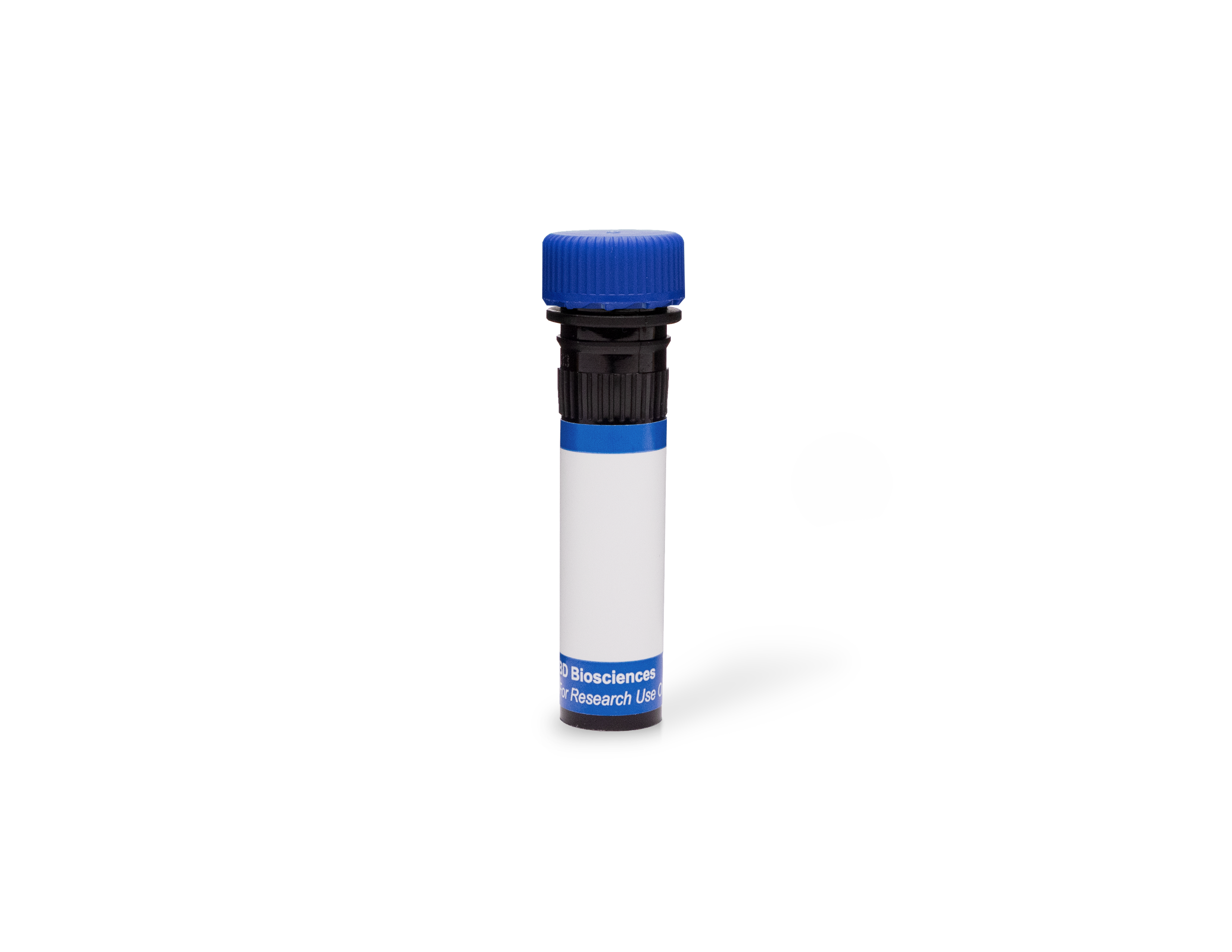 全部商品分类
全部商品分类

品牌: BD Pharmingen
 下载产品说明书
下载产品说明书 用小程序,查商品更便捷
用小程序,查商品更便捷


 收藏
收藏
 对比
对比 咨询
咨询反应种属:
Mouse (Tested in Development)
实验应用:
Flow cytometry (Qualified)
产品介绍
产品介绍
产品信息
荧光素标记
免疫原
Mouse C1q

简单描述
The RmC7H8 monoclonal antibody specifically recognizes the C1q component of the mouse macromolecular C1 complex. The complex is comprised of C1q and 2 molecules each of the serine proteases, C1r and C1q. The C1 macromolecular complex, C1qC1r2C1s2, is bound together by Ca2+ ions. C1q is a serum protein that is synthesized by macrophages and microglia. It exists as an ~460 kDa protein formed from 18 polypeptide chains comprised of three different subunits named C1qa, C1qb, and C1qc. Each chain contains an N-terminal collagen-like sequence and a C-terminal globular gC1q module. Structural studies reveal that C1q is formed as a hexamer with 6 collagen-like triple helices, forming a central fiber bundle, each extended by globular domains. C1q is a multifunctional protein that can regulate a variety of cellular processes in addition to activating the classical complement pathway (CCP). C1q globular regions mediate target recognition such as binding to the Fc regions of IgG and IgM antibodies found in immune complexes including antibodies bound to pathogens or target cells and subsequent activation of the CCP. The C1q globular regions can also bind to bacterial and viral surface proteins as well as altered self elements including histones, DNA, and annexins on the surface of apoptotic or necrotic cells. The enhanced phagocytosis mediated through interaction of bound C1q with various receptors expressed by phagocytes, possibly combined with further complement activation and opsonization of cells, may contribute to the safe removal of stressed or dead cells that are pro-inflammatory. Conformational changes in target bound C1q's collagen-like regions can lead to interaction with and activation of the C1r and C1s proteases which result in activation of the CCP.

商品描述
RmC7H8
The RmC7H8 monoclonal antibody specifically recognizes the C1q component of the mouse macromolecular C1 complex. The complex is comprised of C1q and 2 molecules each of the serine proteases, C1r and C1q. The C1 macromolecular complex, C1qC1r2C1s2, is bound together by Ca2+ ions. C1q is a serum protein that is synthesized by macrophages and microglia. It exists as an ~460 kDa protein formed from 18 polypeptide chains comprised of three different subunits named C1qa, C1qb, and C1qc. Each chain contains an N-terminal collagen-like sequence and a C-terminal globular gC1q module. Structural studies reveal that C1q is formed as a hexamer with 6 collagen-like triple helices, forming a central fiber bundle, each extended by globular domains. C1q is a multifunctional protein that can regulate a variety of cellular processes in addition to activating the classical complement pathway (CCP). C1q globular regions mediate target recognition such as binding to the Fc regions of IgG and IgM antibodies found in immune complexes including antibodies bound to pathogens or target cells and subsequent activation of the CCP. The C1q globular regions can also bind to bacterial and viral surface proteins as well as altered self elements including histones, DNA, and annexins on the surface of apoptotic or necrotic cells. The enhanced phagocytosis mediated through interaction of bound C1q with various receptors expressed by phagocytes, possibly combined with further complement activation and opsonization of cells, may contribute to the safe removal of stressed or dead cells that are pro-inflammatory. Conformational changes in target bound C1q's collagen-like regions can lead to interaction with and activation of the C1r and C1s proteases which result in activation of the CCP.

同种型
Rat IgG1, κ

克隆号
克隆 RmC7H8 (RUO)

浓度
0.2 mg/ml

产品详情
RB780
The BD Horizon RealBlue™ 780 (RB780) Dye is part of the BD family of blue dyes. It is a tandem fluorochrome with an excitation maximum (Ex Max) at 498-nm and an emission maximum (Em Max) at 781-nm. Driven by BD innovation, RB780 can be used on both spectral and conventional cytometers and is designed to be excited by the Blue laser (488-nm) with minimal excitation by the 561-nm Yellow-Green laser. For conventional instruments equipped with a Blue laser (488-nm), RB780 can be used as an alternative to PE-Cy7 and we recommend using an optical filter centered near 780-nm (eg, a 780/60-nm bandpass filter). For spectral instruments equipped with a Blue laser (488-nm), it can be used in conjunction with PE-Cy7. RB780 is on average brighter than PE-Cy7 and has minimal spillover into Yellow-Green detectors.

RB780
Blue 488 nm
498 nm
781 nm
应用
实验应用
Flow cytometry (Qualified)

反应种属
Mouse (Tested in Development)

目标/特异性
C1q

背景
别名
Complement C1q; Complement Component 1q; Complement protein C1q

制备和贮存
存储溶液
Aqueous buffered solution containing ≤0.09% sodium azide.

声明 :本官网所有报价均为常温或者蓝冰运输价格,如有产品需要干冰运输,需另外加收干冰运输费。




